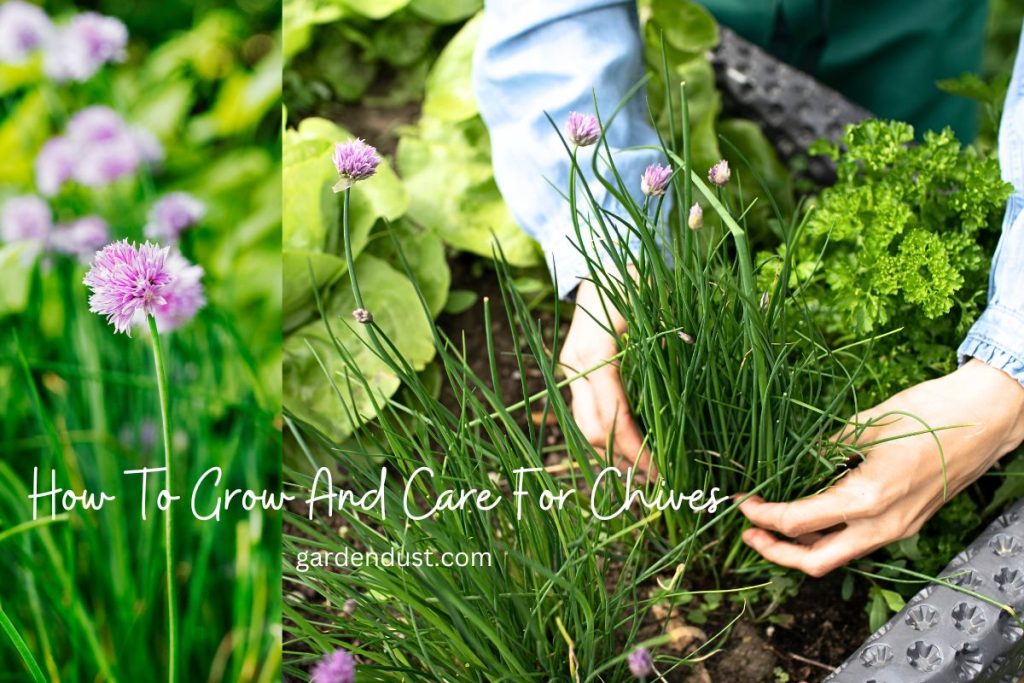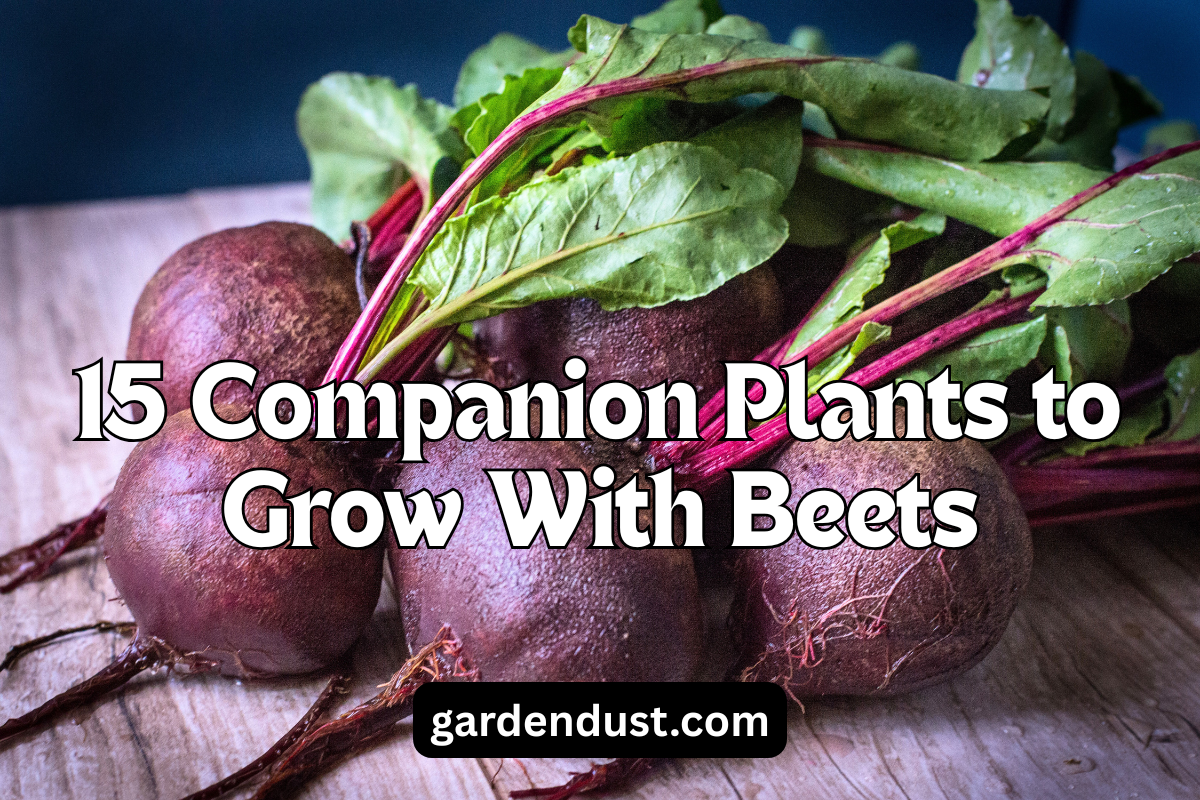Chives (Allium schoenoprasum) are a popular and versatile herb that belongs to the onion family. Known for their delicate onion-flavored leaves and vibrant purple blossoms, chives are a wonderful addition to any herb garden or kitchen. Not only do they enhance the flavor of various dishes, but they also boast ornamental appeal. In this guide, we will delve into the step-by-step process of How To Grow And Care For Chives, ensuring a bountiful harvest and healthy plants. Let’s start….
Grow And Care Guidelines-
Choosing the Right Location
Chives thrive in well-draining soil and full sunlight, making them ideal for outdoor cultivation. Select a location that receives at least 6 hours of direct sunlight per day. If you’re planting chives indoors, place them near a south-facing window to ensure they receive sufficient light.
Soil Preparation
Prepare the soil by loosening it to a depth of 8-12 inches and incorporating compost or well-rotted organic matter. Chives prefer slightly alkaline soil with a pH between 6.0 and 7.0. Proper soil preparation will aid in drainage and nutrient availability.
READ ALSO :-How To Grow And Care For Tansy Plant
Planting Chives
Chives can be grown from seeds or established through division. Here’s how to proceed with each method:
From Seeds:
- Sow chive seeds directly into the prepared soil in early spring or fall, about ¼ inch deep.
- Space the seeds 6-8 inches apart in rows that are 12-18 inches apart.
- Keep the soil consistently moist until germination occurs, usually within 7-14 days.
From Division:
- If you’re using established chive plants, divide them every 2-3 years to prevent overcrowding.
- Gently lift the clump of chives from the ground and separate the individual plants.
- Replant the divisions, spacing them as mentioned earlier.
Watering
Chives prefer consistent moisture, so water them regularly, aiming to keep the soil evenly moist but not waterlogged. During dry spells, increase the frequency of watering. Water at the base of the plant to prevent fungal diseases.
Fertilization
Chives are relatively low-maintenance herbs, but they benefit from occasional feeding. Apply a balanced, all-purpose fertilizer once a month during the growing season (spring and summer). Avoid over-fertilizing, as this can lead to excessive leaf growth with reduced flavor.
Pruning and Harvesting
Regular harvesting encourages chives to produce fresh growth and prevents the plant from becoming too leggy. Harvest the leaves when they are around 6 inches tall. Snip the leaves near the base using clean scissors or pruning shears. Never remove more than one-third of the plant at a time to ensure its continued health.
Pest and Disease Management
Chives are generally resistant to pests and diseases. However, aphids and thrips can occasionally be problematic. If you notice infestations, hose the plants down with a strong stream of water or use insecticidal soap as a remedy. Proper spacing and good air circulation can also help prevent disease.
Winter Care
Chives are perennial herbs, meaning they can survive winter and regrow in the spring. In colder climates, cut back the foliage to about 2 inches above the ground after the first frost. Apply a layer of mulch over the plants to protect the roots from freezing temperatures.
Propagation of Chives: A Step-by-Step Guide
Chives (Allium schoenoprasum) are not only a tasty addition to dishes but also a relatively easy herb to propagate and grow. Propagation involves creating new plants from existing ones, and chives can be propagated through seeds, division, or even from transplants. In this guide, we’ll walk you through each propagation method in detail.
1. Propagation from Seeds:
Growing chives from seeds is straightforward and allows you to start new plants from scratch. Here’s how to do it:
Materials Needed:
- Chive seeds
- Seed-starting trays or pots
- Seed-starting mix
- Watering can or spray bottle
- Clear plastic wrap or a humidity dome (optional)
Steps:
- Fill seed-starting trays or pots with a seed-starting mix. Moisten the mix with water, ensuring it’s evenly damp but not waterlogged.
- Sprinkle chive seeds evenly over the surface of the mix. Press the seeds gently into the soil or lightly cover them with a thin layer of soil.
- Mist the surface with water to settle the seeds in place.
- If desired, cover the trays or pots with clear plastic wrap or a humidity dome to create a greenhouse effect, promoting germination.
- Place the trays or pots in a warm and bright location, but avoid direct sunlight.
- Keep the soil consistently moist but not waterlogged. Use a spray bottle to mist the surface if needed.
- Chive seeds usually germinate within 7-14 days. Once the seedlings have developed a couple of true leaves, they can be transplanted into larger containers or the garden.
2. Propagation through Division:
Dividing established chive plants is a common and effective method of propagation. It helps rejuvenate the plant and create new individuals.
Materials Needed:
- Established chive plant
- Shovel or garden fork
- Pruning shears
- Compost or well-draining soil
Steps:
- Choose a healthy, established chive plant that is at least 2-3 years old.
- Carefully dig up the entire clump using a shovel or garden fork, taking care not to damage the roots.
- Gently separate the individual chive plants by pulling them apart or using pruning shears.
- Replant the divided chives into prepared soil, spacing them as recommended (6-8 inches apart).
- Water the newly divided chives thoroughly to settle the soil around the roots.
3. Propagation from Transplants:
If you have access to established chive plants, you can also propagate them through transplants.
Materials Needed:
- Established chive plant(s)
- Shovel or garden fork
- Pruning shears
- Prepared planting site
Steps:
- Choose healthy, established chive plants for transplanting.
- Dig a hole in the prepared planting site that is slightly larger than the root ball of the chive plant.
- Carefully dig up the chive plant, ensuring you capture as much of the root system as possible.
- Place the chive plant into the prepared hole and backfill with soil, gently firming the soil around the roots.
- Water the transplant thoroughly to help the soil settle and eliminate air pockets.
Usages And Benefits
Chives (Allium schoenoprasum) are more than just a garnish for your baked potatoes; they are a versatile and nutritious herb that can elevate the flavor of various dishes while offering numerous health benefits. With their mild onion-like taste and vibrant green color, chives are a favorite among chefs and home cooks alike. Let’s explore the various usages and benefits of chives:
Culinary Usages:
Incorporating chives into your diet not only enhances the taste of your meals but also provides a range of health benefits. From salads to soups, dips to main courses, chives can transform ordinary dishes into flavorful culinary delights while contributing to your overall well-being. So, next time you’re in the kitchen, don’t forget to reach for this versatile and nutritious herb.
Health Benefits:
- Rich in Nutrients: Chives are a good source of vitamins and minerals, including vitamin K, vitamin C, vitamin A, and folate. These nutrients contribute to overall health and well-being.
- Antioxidant Properties: Chives contain antioxidants, such as quercetin, that help protect cells from damage caused by harmful free radicals.
- Digestive Health: The mild sulfurous compounds in chives may aid digestion by promoting the production of digestive enzymes.
- Immune Support: Chives’ vitamin C content supports the immune system and helps the body fend off infections.
- Bone Health: Vitamin K, present in chives, is essential for bone health and plays a role in blood clotting.
- Anti-Inflammatory Effects: The compounds in chives may possess anti-inflammatory properties, contributing to a reduced risk of chronic diseases.
- Heart Health: Chives contain allicin, a compound found in garlic and onions, which may help lower blood pressure and cholesterol levels, supporting heart health.
- Cancer Prevention: Some studies suggest that the organosulfur compounds in chives may have potential anti-cancer effects, particularly against certain types of cancer cells.
Growing and caring for chives is a rewarding endeavor that offers both culinary delights and visual appeal. With the right conditions and proper care, you can enjoy a steady supply of these flavorful and versatile herbs throughout the year. Whether you’re an experienced gardener or a novice, chives are an excellent choice to add to your garden and culinary repertoire. Happy Gardening…







